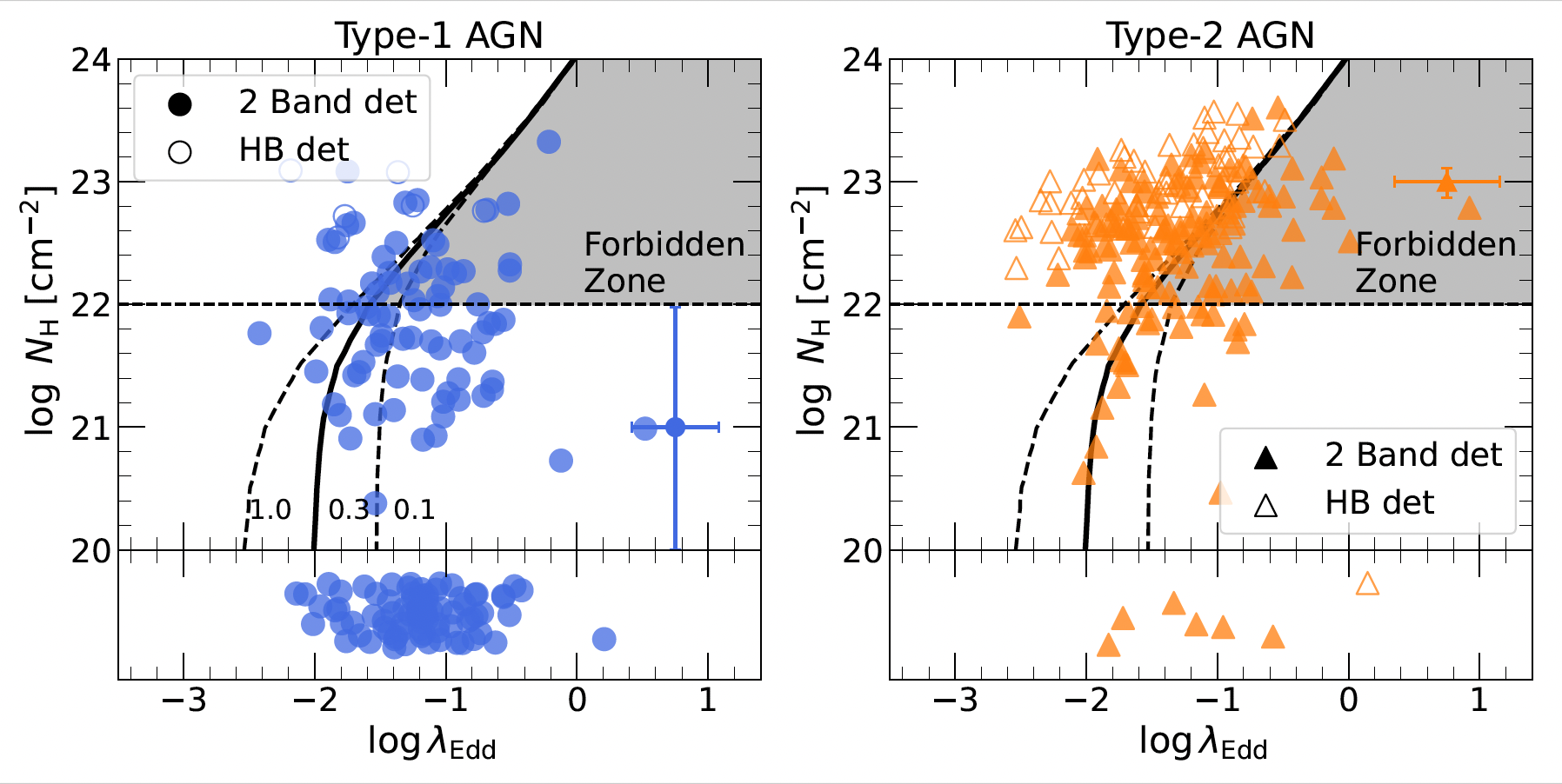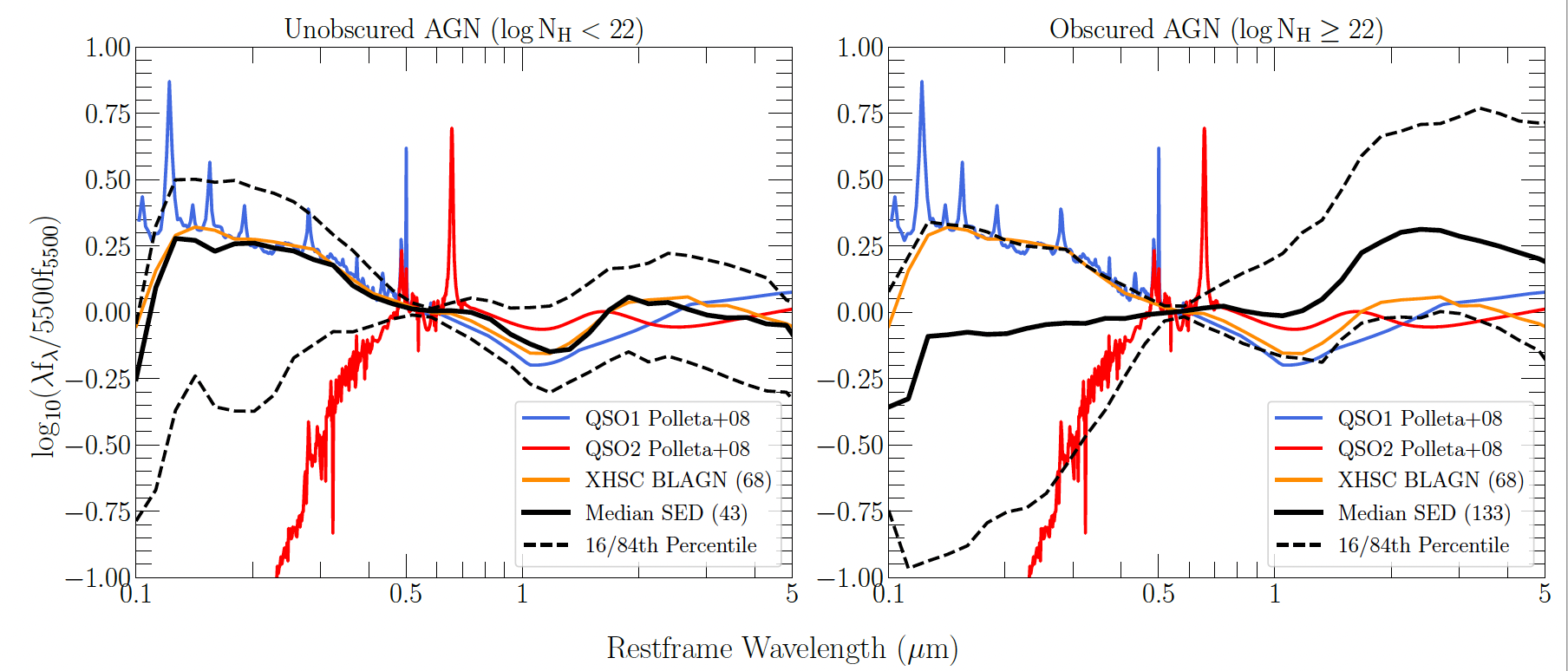Research
Active Galactic Nuclei, Supermassive Black Holes, and Galaxy Evolution
My research is focused on Active Galactic Nuclei (AGN) and supermassive blackholes (SMBH). It is currently well accepted that SMBHs resided ubiquitously in the nuclear regions of most massive galaxies and when SMBH are in a phase rapid accretion growth, they are called AGN. It is believed that AGNs may play an important role in moderating star formation in galaxies. Both objects represent an important part of our understanding of the physics of black hole growth and galaxy evolution.
Here I summarize the research I have done.
Observational Properties of AGN Obscuration During the Peak of Accretion Growth
Vijarnwannaluk et al. 2024
In this work we investigated the properties of dusty material surrounding the supermassive black hole. Dusty material surrounding the black hole can exist only if the SMBH is not overly luminous for the black hole mass. This means that dusty gas surrounding black holes can only exist in specific areas of the Hydrogen column density and Eddington ratio diagram. We found that on average, most dusty AGN have lower Eddington ratio than unabsorbed AGN and the critical effective Eddington ratio which will trigger a blow-out of the dusty gas. However, a siginfican fraction of dusty AGN are above the critcal effective Eddington ratio, indicating dusty gas which is not physically bound by the SMBH. We also find evidence of dusty-free gas in the population of unabsorbed AGN.

The Obscured Fraction of Luminous Quasars at Cosmic Noon
Vijarnwannaluk et al. 2022
In this project, we examined the fraction of obscured AGN during the peak era of accretion growth (z~2). There is a trend in which the fraction of obscured AGN increases with redshift but the fraction is not well determined for luminous high redshift AGN. In this project, we used deep and wide X-ray datasets combined with deep optical and infrared datasets to search for the host galaxy of X-ray sources and estimate their redshift.
By using a sample of 306 AGN at z>2, we determined that 76% of luminous high redshift AGN are obscured suggesting that a large fraction of accretion growth occurs under obscuration. We also investigate the spectral energy distribution of unobscured and obscured AGN. We found that both unobscured and obscured AGN show a variety of shapes which may reflect the broad variety of host galaxy properties and physical processes associated with the obscuration
